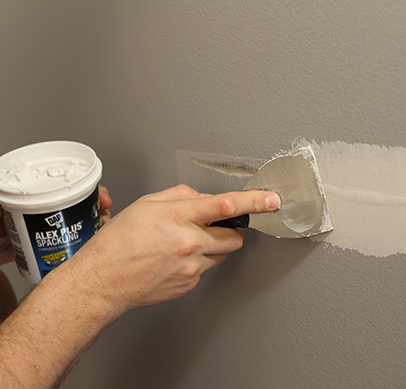Calling all guitar gods and goddesses! Are you tired of your fretboard feeling like a rough patch of sandpaper instead of a smooth highway to rock ‘n’ roll glory? Fear not, for we have the ultimate guide to fretboard maintenance that will have your fingers sliding effortlessly along the strings like a pro surfer riding the perfect wave. So grab your string winder and saddle up, because we’re about to take your fretboard from rusty to righteous in no time!
Contents
- 1 Understanding the Importance of Regular Fretboard Maintenance
- 2 Selecting the Right Tools and Materials for Fretboard Care
- 3 Step-by-Step Process for Cleaning Your Fretboard
- 4 Identifying and Addressing Common Fretboard Issues
- 5 Applying the Perfect Finish for Long-Term Protection
- 6 Advanced Techniques in Fretboard Maintenance for Optimal Performance
- 7 Maintaining Your Fretboard During Different Seasons and Climates
- 8 FAQs
- 9 Rock on with a Well-Maintained Fretboard!
Understanding the Importance of Regular Fretboard Maintenance
So, you’ve been shredding on your guitar for hours on end, but have you ever stopped to think about the poor, neglected fretboard? That’s right, it’s easy to overlook this vital part of your beloved instrument, but fret not (pun intended), because fretboard maintenance is crucial for keeping your guitar in top shape!
First things first, regular cleaning is key to a happy fretboard. Dust, dirt, and grime can build up over time, affecting the playability and tone of your guitar. Grab a soft cloth and gently wipe down the fretboard to keep it looking and feeling fresh. Trust me, your fingertips will thank you!
Next up, conditioning the fretboard is essential for maintaining its longevity. Just like your skin needs moisturizer, the fretboard craves nourishment too. Apply a small amount of quality fretboard conditioner to keep it hydrated and prevent drying out. Your guitar will be smooth as butter and ready to rock!
Lastly, don’t forget about those pesky frets! Regular polishing will not only make your guitar sparkle like new but will also prevent any potential corrosion. Grab some steel wool or a fret polishing cloth, and give those frets some love. Your guitar will be singing with joy in no time!
Selecting the Right Tools and Materials for Fretboard Care
When it comes to fretboard care, selecting the right tools and materials is essential for keeping your guitar looking and sounding great. With the countless options available, it can be overwhelming to choose the best products. Here are some tips to help you navigate the world of fretboard maintenance:
First and foremost, you’ll need a quality fretboard cleaner. **Invest in a cleaner specifically designed for your fretboard material**, whether it’s rosewood, ebony, or maple. Avoid harsh chemicals that can damage the wood and opt for a gentle, non-abrasive cleaner instead.
Next, you’ll need some fine-grade steel wool or a polishing cloth to help remove any stubborn grime or tarnish. **Remember to always go with the grain of the wood to avoid scratching the surface**. For a squeaky-clean finish, consider using a lemon oil or fretboard conditioner to hydrate and protect the wood.
Lastly, don’t forget about your frets! **Invest in a fret polishing kit to keep your frets shining like new**. A set of fret guards can also come in handy to protect the fretboard while polishing. With the right tools and materials in hand, your fretboard will be in tip-top shape in no time!

Step-by-Step Process for Cleaning Your Fretboard
So, you’ve decided it’s time to give your fretboard a much-needed cleaning. Congratulations, you’re about to embark on a journey to fretboard cleanliness that will leave your guitar feeling fresh and renewed. Here’s a step-by-step guide to get you through this exciting adventure:
First things first, gather all your supplies. You’ll need:
- A soft cloth
- Lemon oil or fretboard conditioner
- A toothbrush (preferably not the one you use for your teeth)
- A small bowl of water
Once you have all your supplies ready, it’s time to roll up those sleeves and get to work. Start by wiping down your fretboard with a dry cloth to remove any surface dirt and grime. This is the guitar equivalent of a warm-up before a workout – necessary but not the main event. Next, take your toothbrush and dip it in the water. Gently scrub along the frets to loosen any stubborn gunk.
Now, it’s time to show your fretboard some love with some lemon oil or fretboard conditioner. Apply a small amount to a clean cloth and rub it into the wood. This will help restore moisture and protect your fretboard from drying out. Think of it as giving your fretboard a spa day – it deserves to be pampered once in a while.

Identifying and Addressing Common Fretboard Issues
Do you often find yourself getting lost on the fretboard, like a cat in a maze of strings? Fear not, for we are here to help you navigate the treacherous waters of the fretboard and emerge victorious!
One common issue that guitarists face is fret buzz, that annoying sound that creeps in when you least expect it. To address this issue, try adjusting the action of your guitar or checking for any loose frets. Remember, a little tweaking here and there can go a long way in banishing that pesky buzz for good!
Another fretboard foe is the dreaded dead note, the musical equivalent of a flat tire. To identify and address this issue, try adjusting your finger pressure or checking for any obstructions on the fretboard. With a little practice and patience, those dead notes will be resurrected into sweet, sweet music once more!
Lastly, don’t forget about intonation, the sneaky villain that can throw your tuning out of whack faster than you can say “rock and roll”. To tackle this issue, consider getting your guitar professionally set up or investing in a quality tuner. A well-intonated guitar is like a well-oiled machine - smooth, efficient, and ready to rock your socks off!

Applying the Perfect Finish for Long-Term Protection
So, you’ve spent hours laboring over your project, meticulously applying layer upon layer of paint or finish to achieve the perfect look. Now comes the crucial step of ensuring that all your hard work doesn’t go to waste – .
First things first, make sure you’re using the right product for the job. Don’t skimp on quality here – it’s like putting a cheap plastic cover on a new iPhone. You wouldn’t do that, would you? No, you want something durable, reliable, and protective. Look for products specifically designed for long-term protection, preferably ones with UV inhibitors to prevent fading.
Next, prep your surface like you’re getting ready for a hot date. Sand it down, wipe away any dust or debris, and make sure it’s clean and dry. You don’t want any surprises later on, like a rogue dust particle ruining your finish. Take your time with this step – just like a good skincare routine, prep work is key for a flawless finish.
Now, it’s time to apply the finish. Treat it like you’re icing a cake – smooth, even strokes, no rushing or glopping it on. Remember, less is more when it comes to finish – you want a nice, thin layer that will dry evenly and provide maximum protection. And voila! You’ve just sealed the deal on your project, ensuring it stays looking fabulous for years to come. Now sit back, relax, and admire your handiwork - you’ve earned it!
Advanced Techniques in Fretboard Maintenance for Optimal Performance
So, you’ve mastered the basics of fretboard maintenance, but now it’s time to take it to the next level for optimal performance. Here are some advanced techniques that will have your guitar feeling and sounding better than ever:
1. Conditioning your fretboard
- Invest in a high-quality fretboard conditioner and apply it regularly to keep your fretboard hydrated and protected.
- Don’t forget to clean your frets before conditioning to ensure maximum absorption.
- Your fretboard will thank you with improved playability and tone.
2. Polishing your frets
- After conditioning your fretboard, it’s time to give those frets some love too.
- Use a good metal polish and a fine-grit polishing cloth to restore shine and smoothness to your frets.
- Your fingers will glide effortlessly across the fretboard, and your bends will be buttery smooth.
3. Setting up your guitar
- Consider taking your guitar to a professional for a setup to ensure everything is in top shape.
- Adjusting the action, intonation, and truss rod can make a world of difference in how your guitar plays and sounds.
- Once your guitar is properly set up, you’ll wonder how you ever played without it.
Maintaining Your Fretboard During Different Seasons and Climates
During different seasons and climates, your fretboard can be subject to some serious wear and tear. It’s important to keep your fretboard in top shape, no matter if it’s a scorching summer day or a chilly winter night.
Here are some tips to keep your fretboard in tip-top condition:
- **Clean your fretboard regularly** – Dirt and grime can build up quickly on your fretboard, so make sure to give it a good cleaning every now and then. Use a quality fretboard cleaner and a soft cloth to remove any debris.
- **Moisturize your fretboard** – Just like your skin, your fretboard can get dried out during the winter months. Use a quality fretboard conditioner to keep it hydrated and looking its best.
- **Adjust your guitar setup** – Changes in temperature and humidity can affect the tension on your guitar strings. Make sure to adjust your guitar setup accordingly to prevent any damage to your fretboard.
By following these tips, you’ll be able to maintain your fretboard no matter what the weather throws at you. So go ahead, rock out in any season with confidence!
FAQs
Is it necessary to clean and condition the fretboard of my guitar?
Absolutely! Just like you wouldn’t go months without washing your hair (we hope), your guitar’s fretboard needs some TLC too. Not only will cleaning and conditioning help maintain your fretboard’s appearance, but it will also prevent dirt and grime from affecting the playability of your guitar.
How often should I clean and condition my guitar’s fretboard?
It really depends on how often you play and how dirty your fretboard gets. If you’re playing every day for hours on end (rockstar status, we see you), you may want to clean and condition your fretboard every few months. If you’re more of a casual player, once or twice a year should do the trick.
What products should I use to clean and condition my fretboard?
There are a ton of options out there, but we recommend using a good quality guitar fretboard cleaner and conditioner. You can even make your own with some lemon oil and a soft cloth. Just don’t use any harsh chemicals or household cleaners – your fretboard will thank you.
How do I properly clean and condition my guitar’s fretboard?
First, loosen the strings and remove any excess dirt and grime with a soft cloth. Then, apply a small amount of fretboard cleaner and gently rub it into the wood. Let it sit for a few minutes, then wipe off any excess. Finally, apply a small amount of fretboard conditioner to keep the wood moisturized and looking fresh.
What are some common mistakes to avoid when maintaining my guitar’s fretboard?
One big no-no is using too much cleaner or conditioner – a little goes a long way. Another mistake is not letting the cleaner and conditioner sit on the fretboard long enough before wiping it off. And lastly, never use steel wool or abrasive materials on your fretboard – unless you’re trying to give it that “I just survived a tornado” look.
Rock on with a Well-Maintained Fretboard!
And there you have it, fellow guitar enthusiasts! With these tips and tricks for fretboard maintenance, you’ll be shredding like a pro in no time. Remember, a happy fretboard is a happy guitar, so don’t neglect those strings and frets. Keep them clean, hydrated, and in tip-top shape for maximum rockstar potential. Now go forth and make those strings sing!
Until next time, keep strumming and rock on! 🤘🎸



